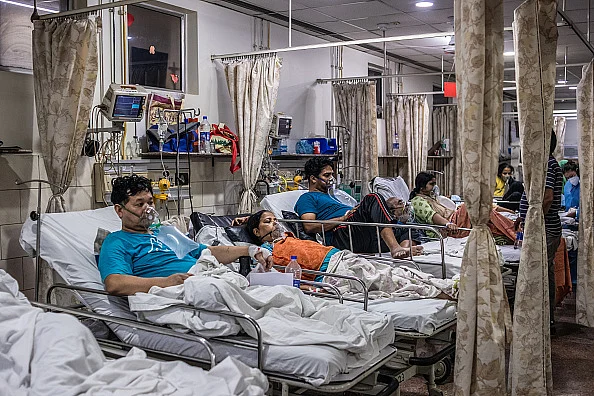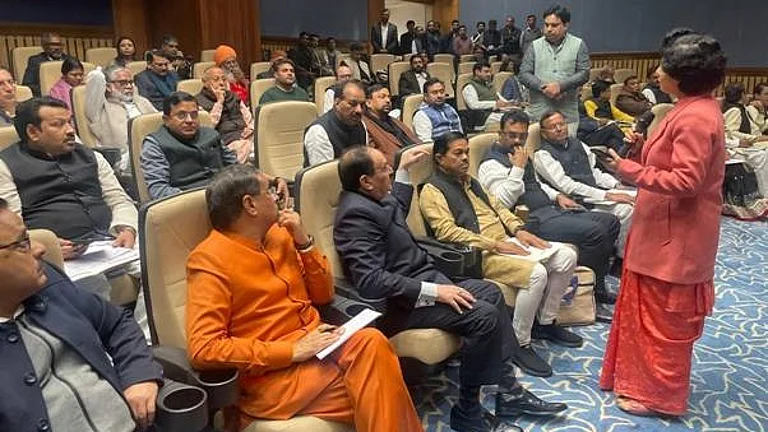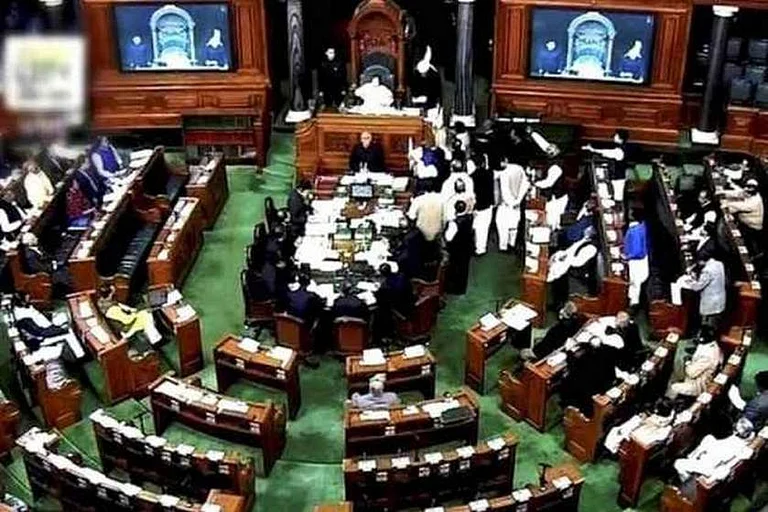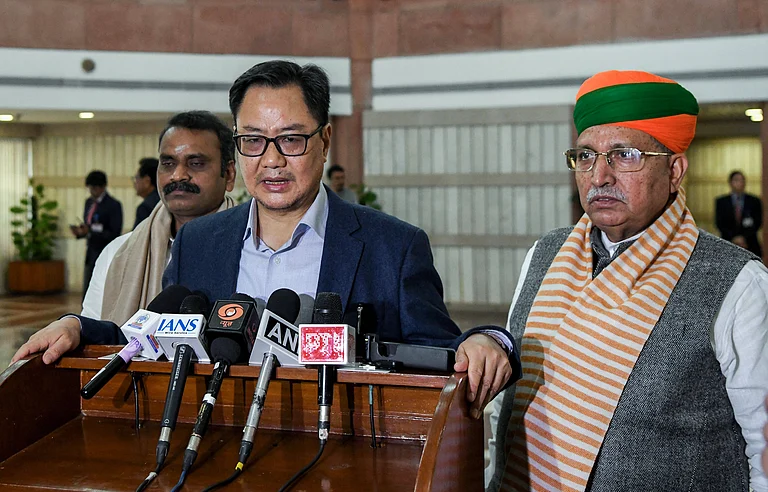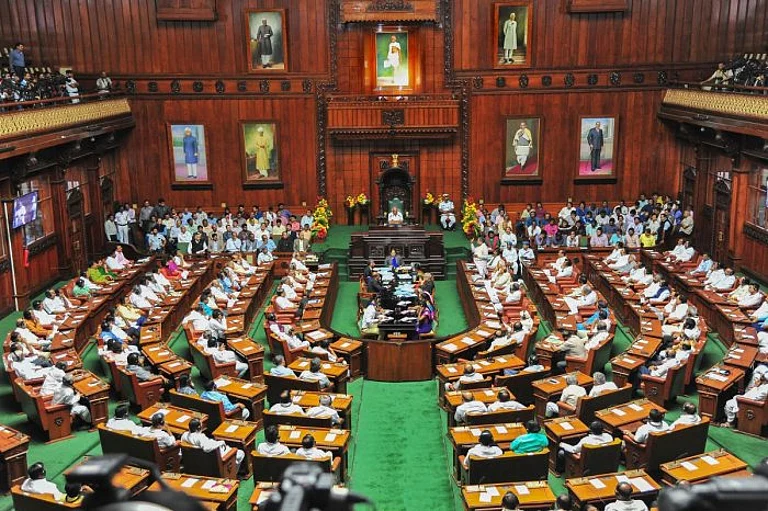Much of Prime Minister Narendra Modi’s second tenure was spent in the thick of the Covid-19 pandemic when containing the spread of coronavirus outbreak, ensuring vaccination, arranging medicines and therapeutics, and mitigating the economic fallout took precedence over everything else.
While the Union Budget 2020-21, the first of the second Modi ministry, was to set the tone for the next five years, the Covid-19 pandemic upended those plans. It was reflected in the numbers.
In 2020-21, the Union Ministry of Health and Family Welfare was allocated Rs 67,112 crore — the allocation was before the pandemic was declared. By the end of the year, however, the Health Ministry had spent a total of Rs 80,026 crore. Moreover, around 10,200 crore were additionally allocated for inter-ministerial spending for pandemic-specific purposes to the health, science, and rail ministries.
The trend of increased health spending continued for the next two years. In the year 2022-23, the healthcare expenditure peaked at around 2.1 per cent of the gross domestic product (GDP). However, even during these two years —2021-23— the actual expenditure fell short of the allocations and projected expenditure. Moreover, the research and development component of the budget remained largely stagnant even during the height of the pandemic.
India’s Health Budget In Numbers
The Union government should allocate at least 2.5 per cent of the gross domestic product (GDP) to health, according to the National Health Policy, 2017.
That is, however, not the case. At the peak of coronavirus pandemic-induced increased health spending, the share of the health budget reached the height of 2.1 per share of the GDP in 2022-23. That too was short of the stated share and even that is now expected to decline.
For the year 2023-24, it is projected that the health budget’s share of the GDP will decline to 1.18 per cent, according to an analysis by National Council of Applied Economic Research (NCAER).
While the pre-pandemic budget of 2020-21 was around Rs 67,000 crore, the overall health-related spending that year came around to be Rs 90,200 crore, which was divided among the health, science and technology, and railway ministry — with the health ministry understandably spending the bulk of around Rs 80,000 crore.
While 2020-21 was characterised by a massive surge in expenditure, the trend of underutilisation returned the very next year even if increased expenditure continued.
In 2021-22, Union Finance Minister Nirmala Sitharaman allocated Rs 74,602 crore to the Union Health Ministry. The amount was later revised upward to Rs 85,915 crore. Later, however, it was revealed that the actual expenditure was Rs 84,470 crore — lower than the revised estimated expenditure.
In 2022-23, the trend was seen again. While Sitharaman allocated Rs 86,606 crore to the Union Health Ministry, the expenditure was later revised downward to Rs 79,145 crore. The final expenditure has not yet been released and is expected to feature in the upcoming budget documents.
In her book ‘Billions Under Lockdown: The Inside Story of India's Fight Against COVID-19’, Abantika Ghosh noted that the years of low healthcare spending would have a great effect on India’s pandemic management.
“It essentially meant that the public spending on healthcare in India, as a percentage of the Gross Domestic Product (GDP), continued to hover around a dismal 1 per cent, a figure that had haunted Indians for many years but would now change their very lives as the pandemic raged throughout the length and breadth of the landmass. The years of measly health spending, the dismal health infrastructure in relation to the population it served, and the poor distribution of healthcare infrastructure and manpower (with urban areas being particularly well endowed) were the reasons why India had to take the steps it did – that has been the kindest explanation of what unfolded next. Had the country not bought itself time with the lockdown to upgrade health infrastructure, it would have been swamped. There was no way for the Indian health system to make room for the kind of numbers that trickled out of the other affected countries,” wrote Ghosh.
The Underutilisation Of Health Budget
While the Union government’s healthcare expenditure falls short of its own goals, even whatever is allocated is not being spent completely, according to figures of recent years.
The inability to spend the allocated funds at the level of both the Centre and the states and union territories has been a long-standing issue and more meaningful administrative reforms may address this, says public health expert Rajib Dasgupta.
“Reforms are key to resolving the problem of underutilisation. While health bureaucrats can explain in the parliament so that policymakers may get to the bottom of the issue, there are some broad long-standing reasons contributing to underutilisation. One is the continuing short-staffing of government bodies that leads to underutilisation of the salary components. This is also a human resources (HR) issue as lots of posts are vacant across the centre, states, and UTs, and that affects the functioning of departments,” says Dasgupta, Professor, Centre of Social Medicine and Community Health (CSMCH), Jawaharlal Nehru University (JNU).
Dasgupta further tells Outlook that, in the case of research institutions, there needs to be greater flexibility with research directors that allows the desired utilisation of funds.
“Those handling the research should have the larger say in the way funds are spent. Such decentralisation of expenditure will ensure funds are allocated for tasks that actually need to be done. For this, there needs to be coordination between the funding organisations and the research institutions and dialogue is the only way forward to ensure synergy,” says Dasgupta.
As health remains a state subject, states and UTs may need to do more on this front. While the Centre allocates funds, the end-user spending depends largely with the states and UTs. In a 2019 report, the NITI Ayog said, “The lack of manpower in public health facilities is one of main reasons of healthcare underutilisation. The vacancy status of health professionals in relation to sanctioned positions shows how states address supply-side resources in relation to the need.”
Research Budget Needs Improvement
While the NITI Ayog has stated that the Union government should allocate at least 5 per cent of the health budget towards research and development, the allocation has been stagnant at around 3-4 per cent.
While there was a brief spike in the R&D expenditure in 2020-21, the trend soon returned to lower expenditure.
In 2020, the Union Health Ministry’s Department of Health Research (DHR) was allocated Rs 2,800 crore. It was later revised upward to Rs 4,062 crore. But the allocation came down the next year.
In 2021-22, the DHR’s expenditure was Rs 2,691 crore.
In 2022-23, the estimated expenditure was Rs 2,775 crore.
In 2023-24, the allocation was Rs 2,980 crore.
Such little expenditure has led to questions about Indian preparedness for the next major disease outbreaks. Experts across the world are of the view that the Covid-19 pandemic is not the last pandemic. With the advent of climate change and evolving diseases, outbreaks of new diseases are likely and increased budgets for research is critical to being ready for such outbreaks.
Health economist Bhabesh Hazarika tells Outlook that more budgetary allocations are required for R&D as well as capital expenditure in the health sector to be future-ready.
Pointing to Union Finance Minister Nirmala Sitharaman’s announcement in the last year’s budget to set up new nursing colleges and biosafety level (BSL) 3-4 labs for advanced research, he said the government has indeed been focussing on increasing the capital expenditure for the past two-three years.
“To be ready for the future, we need more capital expenditure and research grants. We also need long-term plans, at least three-year budgetary plans for healthcare expenditure, so that we may have a longer outlook instead of having a year-by-year approach to addressing healthcare needs. To address issues like mutations of pathogens, evolving drug resistance, and studying emerging diseases, we need long-term plans with higher allocations,” says Hazarika, an economist at the National Institute of Public Finance and Policy (NIPFP).
Hazarika adds that at the institutional level, the role of ICMR is very critical, especially at times of health emergencies like outbreaks of new diseases. “Accordingly, the ICMR should be allocated higher resources for robust medical research given its pivotal role on the frontline during major emergencies,” says Hazarika.
Expectations From Health Budget 2024
Union Finance Minister Nirmala Sitharaman will present the final budget of the second Modi ministry on Thursday. It will be an interim budget and the full budget will be presented by the new government once it has been sworn in after the elections slated to be held in April-May.
While no major policy announcements are expected as it is going to be an interim budget, there are still expectations that Sitharaman may squeeze in certain measures aimed towards women and ‘one health’ programmes.
Bhabesh Hazarika of NIPFP says that the women have played a much more pronounced role in elections in recent years and that has made them a key target of schemes in consecutive budgets.
“The budget serves as a statement of intent of the government. It also reflects the will of the people. So, the governments use budgets to set the tone for the year ahead. Even though this is going to be an interim budget, we may expect women-, gender-, and nutrition-specific focus directed at crucial demographic segments,” says Hazarika.
Even though health is a state subject, the Union health budget lays out the national priorities for healthcare and funds the major share of critical programmes like those for HIV/AIDS and TB, which means its importance cannot be underestimated, says Rajib Dasgupta of JNU’s Centre of Social Medicine and Community Health (CSMCH).
Dasgupta further says, “Moreover, while health is a state subject, pandemic management is a central imperative. Considering the role of the Union government in setting the direction of the national policies, and the extent of its funding to critical healthcare programmes including immunisation, the budget remains a very critical exercise and the issues of under-funding and underutilisation should be addressed systematically.”






